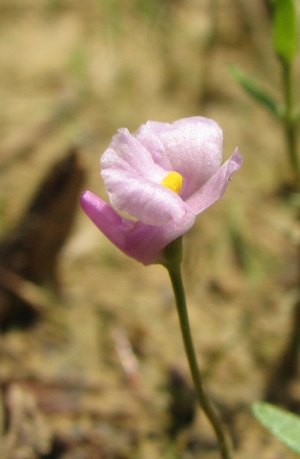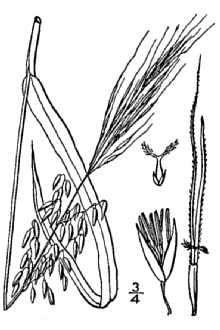Utricularia resupinata
 |
 |
Photo Courtesy Renee Brecht |
Britton & Brown |
| Botanical name: | Utricularia resupinata |
| Common name: | reversed bladderwort |
| Group: | dicot |
| Family: | Lentibulariaceae |
| Growth type: | forb/herb |
| Duration: | annual; perennial |
| Origin: | native |
| Plant height: | 3/4"-4" |
| Foliage: | leaves alternate, three part; no roots Tiny bladders originally thought to float the plant actually trap and digest very small invertebrates, opening when trigger hairs are disturbed and suddenly sucking in water and any invertebrates (i.e., they are carnivorous). Digestion takes approxiamately 15 minutes to 2 hours. The "bug soup" is then extracted into the stem, clearing out the bladder's vaccuum and resetting the trigger hairs. Mary Treat of Vineland, an early female scientist, did much research on Utricularia and was one of the first scientists to suspect that the bladders were actually traps for tiny creatures rather than air flotation devices. |
| Flower: | pink to purple, 1/4"-1/2" long, facing upward |
| Flowering time: | July to August |
| Habitat: | very shallow water or wet mud |
| Range in New Jersey: | local in the southern part of the Pine Barrens |
| Heritage ranking, if any: | S1, E, LP, HL |
| Distribution: |  |
| Misc. | Utriculara, Latin, "raft floated on bladders", resupinata, Latin, "bent back, reclined" Preys on fairy shrimp, water fleas, copepods, scuds, paramecia, nematodes, and microscopic insect larvae. Insect pollinated. |